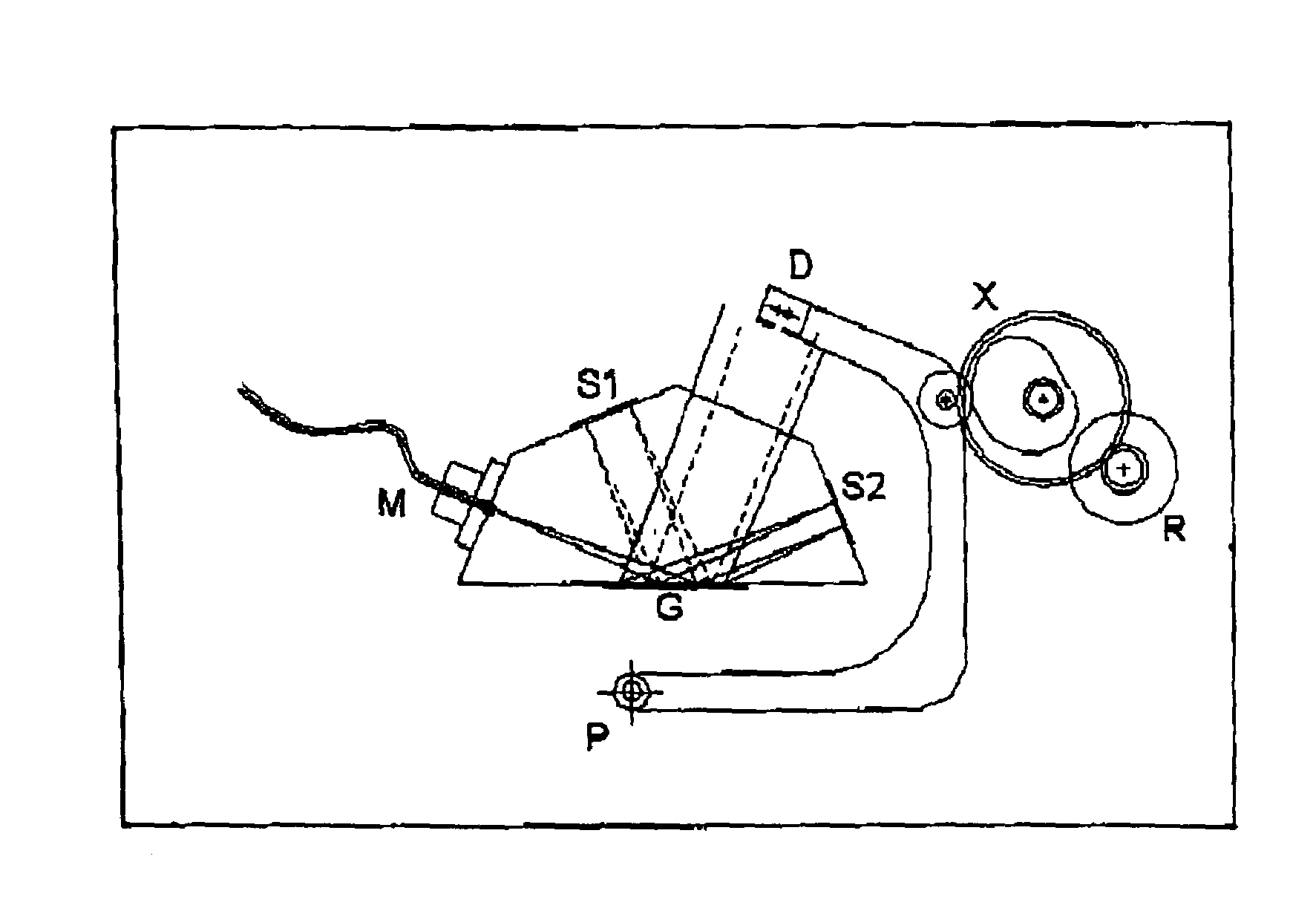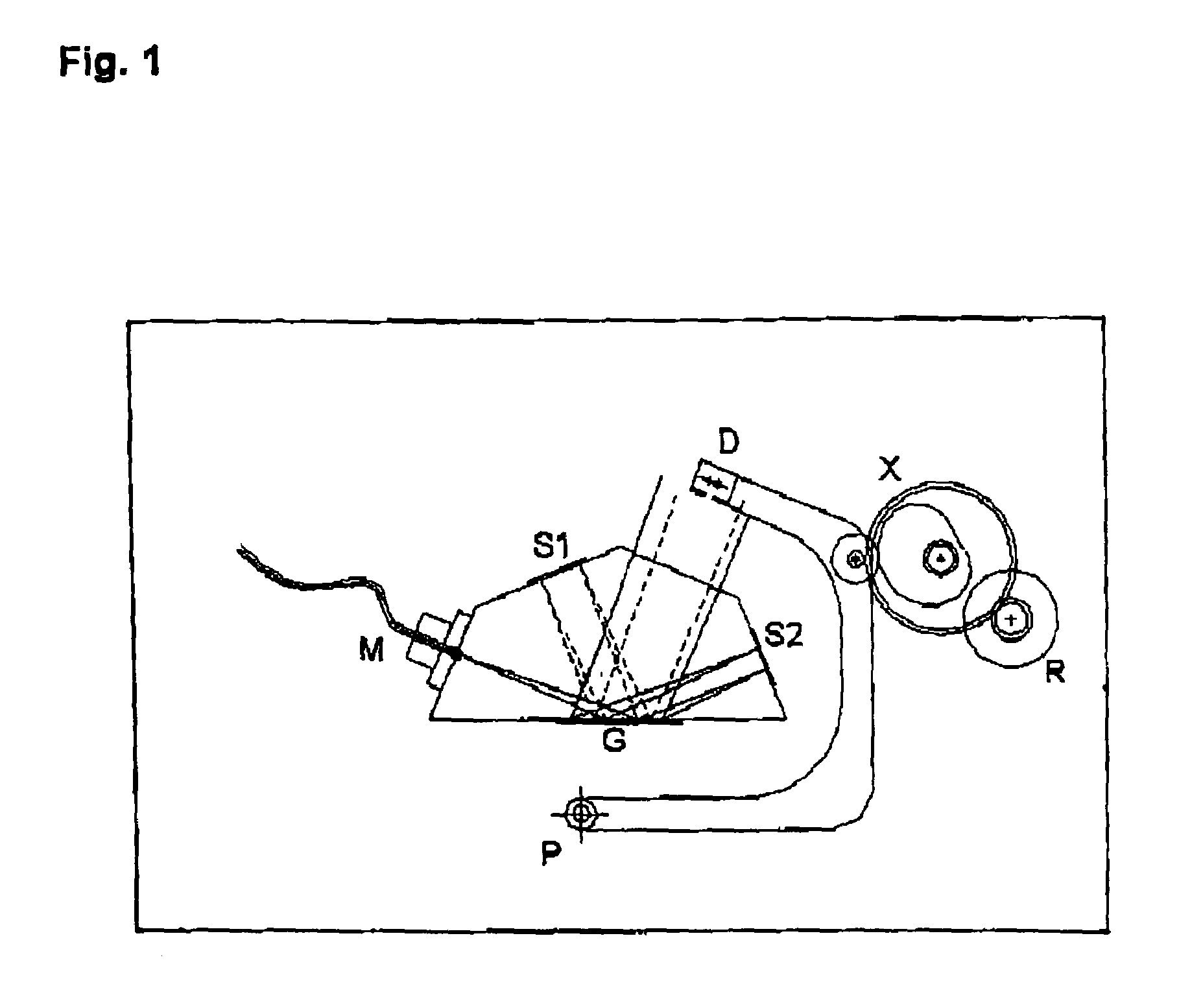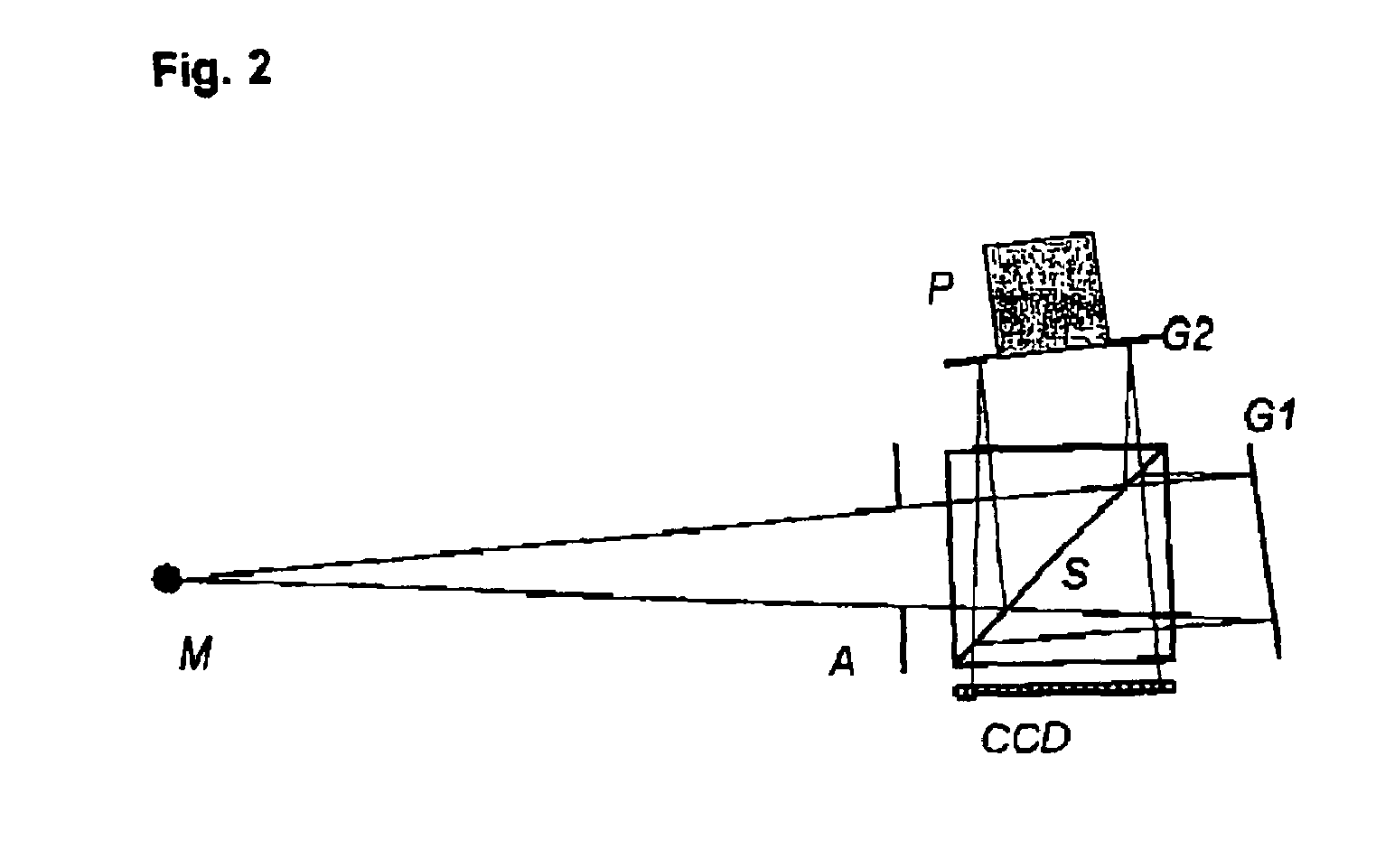Diffractive interferometric optical device for measuring spectral properties of light
- Summary
- Abstract
- Description
- Claims
- Application Information
AI Technical Summary
Benefits of technology
Problems solved by technology
Method used
Image
Examples
first embodiment
III. First Embodiment
[0080]FIG. 1 illustrates an extremely compact arrangement of the apparatus of the invention with the optical components being integrated in a monolithic glass block.
[0081]According to the invention there is means (M) for coupling in one single spatial mode of an incoming light field. In the shown embodiment said means for coupling in a single mode is implemented using an optical mono mode fibre.
[0082]In the shown very compact setup the optical elements (M—mono mode coupler, G—grating, s1—Mirror, s2—Mirror) are shown fixed on a pentagonal mount. The mount may be made of glass or a suitable transparent material.
[0083]The light coupling (M) takes place directly from said mono-mode fiber into the monolithic glass block.
[0084]The incoming single spatial mode of light is directed to a grating (G). The grating is used as a beam splitter causing the incoming single spatial mode to be split according to amplitude into two partial fields.
[0085]The grating creates one part...
second embodiment
IV. Second Embodiment
[0098]Referring now to FIG. 2, there is shown an arrangement that uses a separate beam splitter (S) for the division of the amplitude of the waves and two dispersive elements (G1, G2) in the arms of the interferometer.
[0099]According to the invention there is means (M) for coupling in one single spatial mode of an incoming light field. In the shown embodiment said means is a spatial filter i.e. implemented as pinhole.
[0100]Said incoming single spatial mode of light is directed to a beam splitter (S) passing an aperture (A). An aperture diaphragm (A) as shown is advantageous to limits the numerical aperture of the incoming light in order to avoid stray light.
[0101]The shown beamsplitter is implemented as cubic splitter using a semitransparent mirror. The incoming single spatial mode of light is split by amplitude into two partial fields.
[0102]One of the partial fields is the part of the field passing the semitransparent mirror. This partial field is directed to a...
third embodiment
V. Third Embodiment
[0111]The embodiments shown above are advantageous because they are not dependent on imaging optical elements.
[0112]Another advantage of the invention resulting from coupling in a single spatial mode is the possibility to employ means for dividing the wavefront of the single spatial mode to generate the partial fields. One skilled in the art will recognize advantages associated with using a wave front splitter instead of an amplitude splitter to allow for a broad range of new advantageous embodiments.
[0113]Referring now to FIG. 3, there is shown an arrangement that uses a wavefront splitter based on two optical gratings (G1,G2) for the division of the wavefront while said gratings (G1,G2) at the same time are used as spectrally dispersive elements.
[0114]According to the invention there is means (M) for coupling in one single spatial mode of an incoming light field. In the shown embodiment said means is a spatial filter i.e. implemented as pinhole.
[0115]In the arra...
PUM
 Login to View More
Login to View More Abstract
Description
Claims
Application Information
 Login to View More
Login to View More - R&D
- Intellectual Property
- Life Sciences
- Materials
- Tech Scout
- Unparalleled Data Quality
- Higher Quality Content
- 60% Fewer Hallucinations
Browse by: Latest US Patents, China's latest patents, Technical Efficacy Thesaurus, Application Domain, Technology Topic, Popular Technical Reports.
© 2025 PatSnap. All rights reserved.Legal|Privacy policy|Modern Slavery Act Transparency Statement|Sitemap|About US| Contact US: help@patsnap.com



